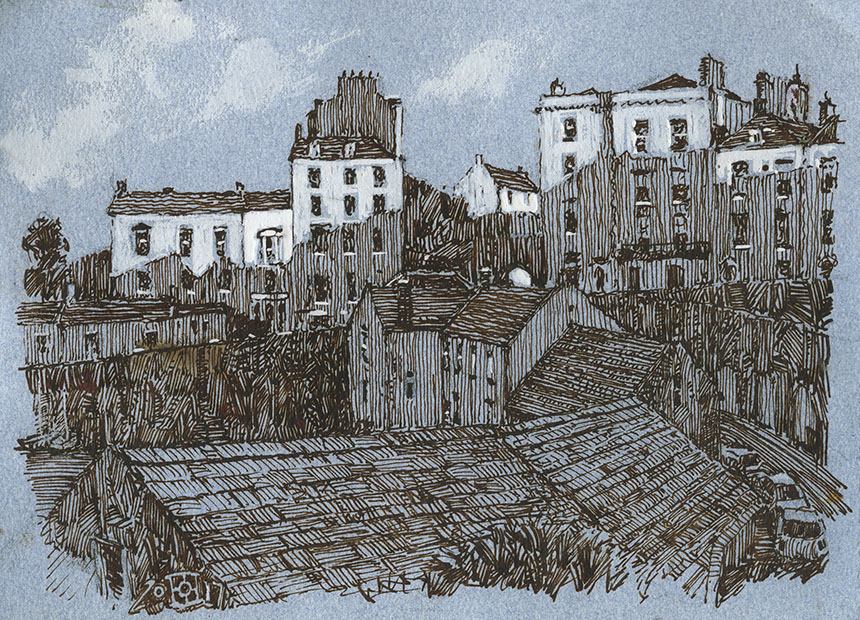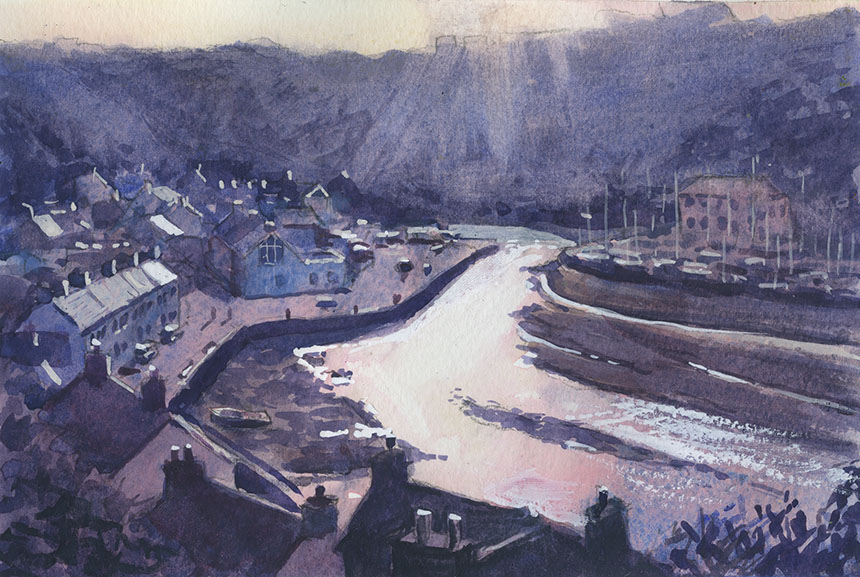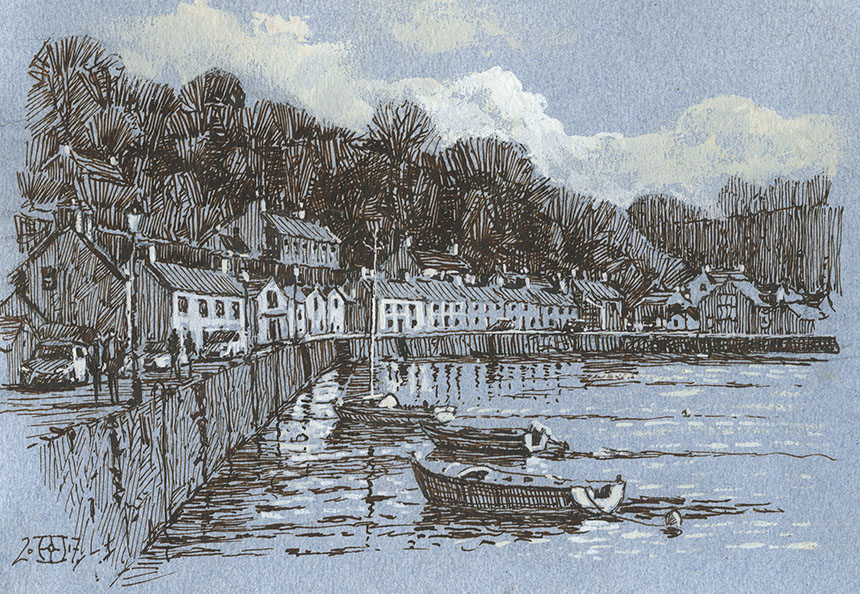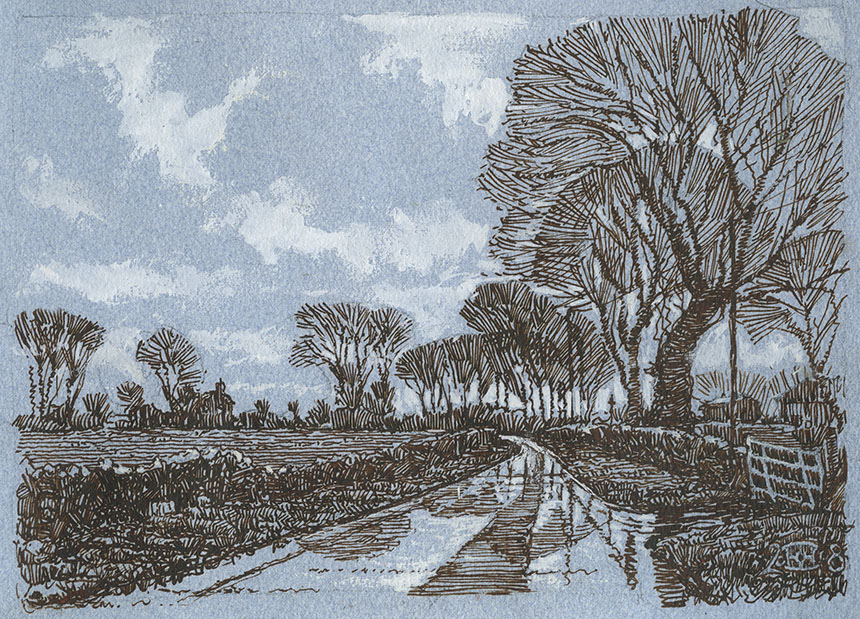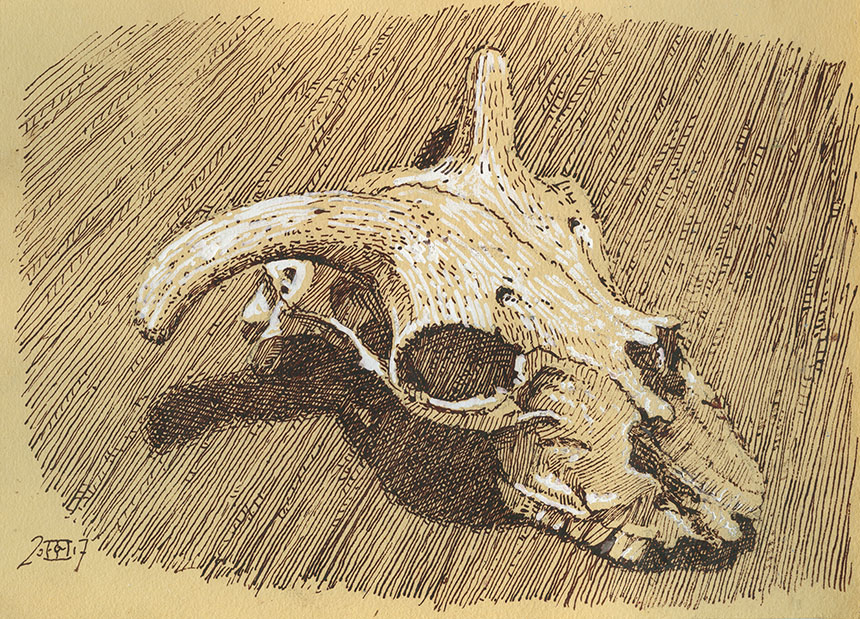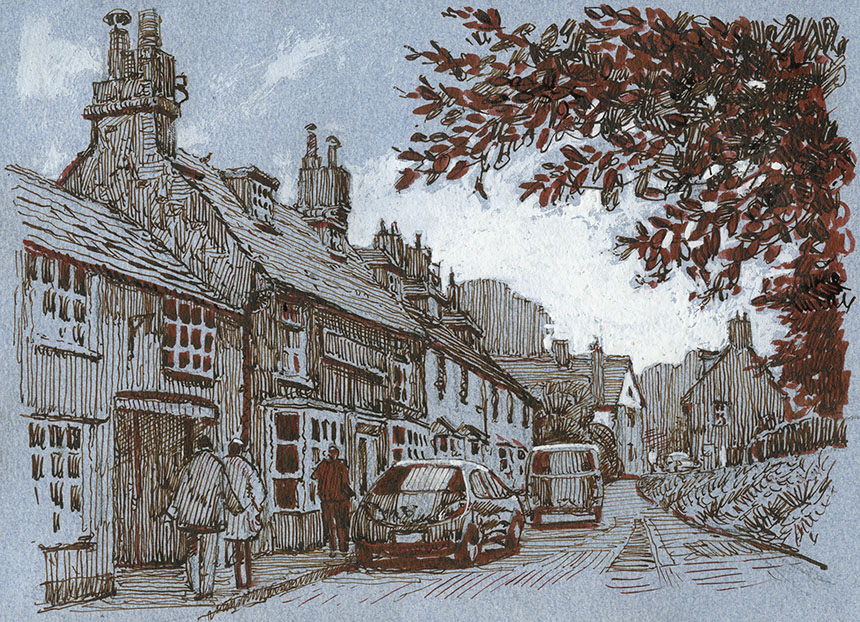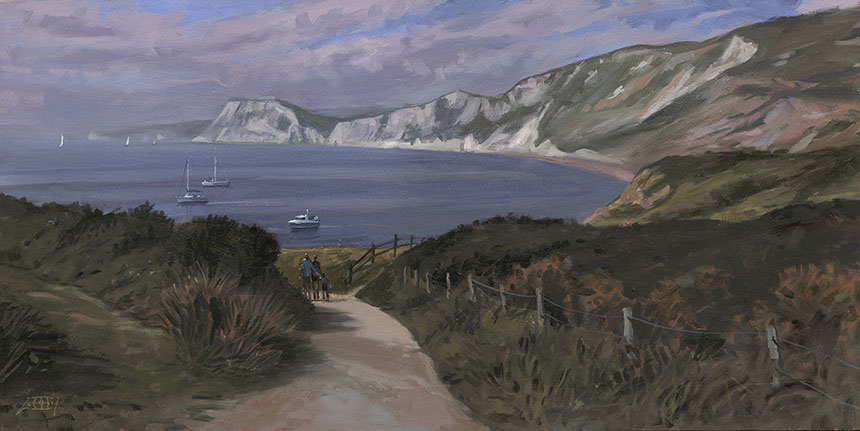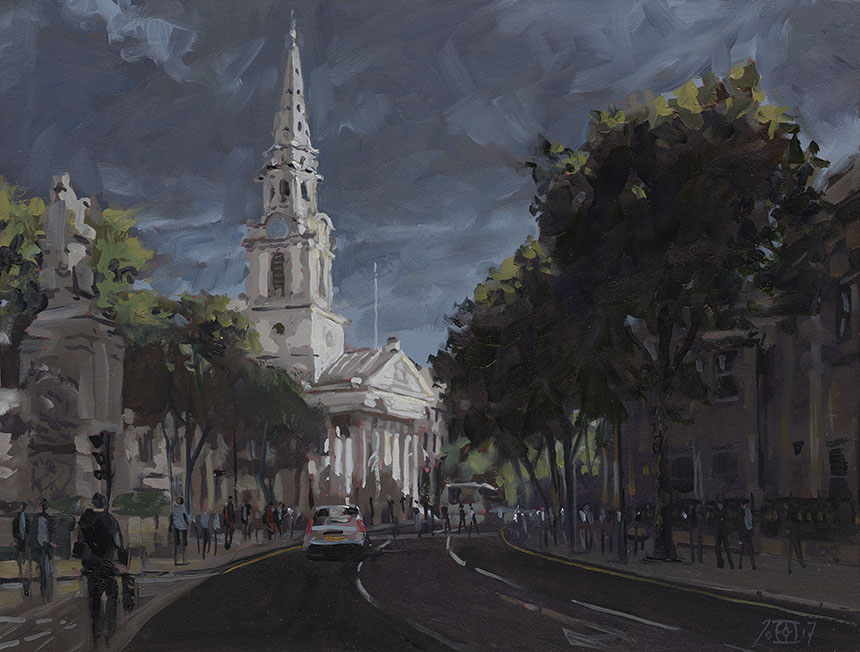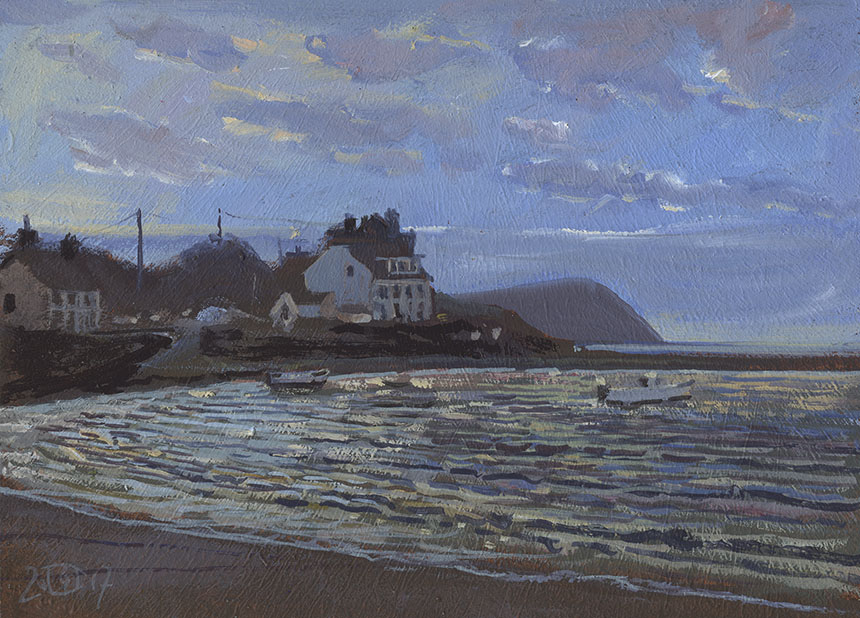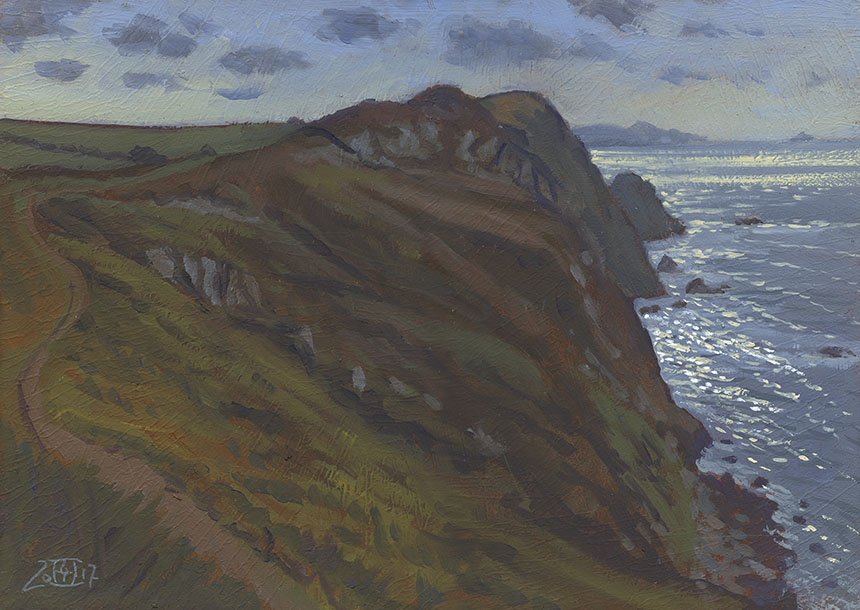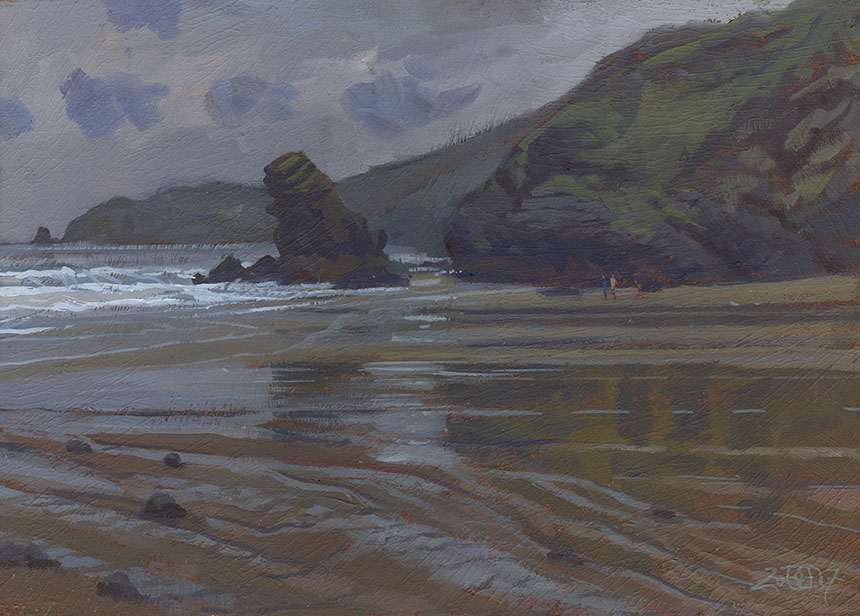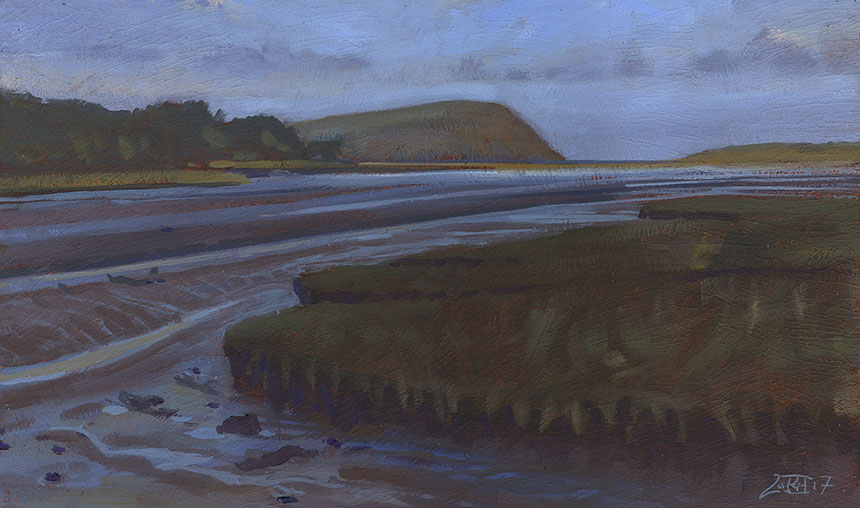Since moving to Dorset I have been faced with a seemingly endless pretty villages with comfortably settled thatched roofs crowning rose wreathed cottages. I have to date not painted many of them, but feel that I perhaps should. I tell myself that I need a new angle on them that will lift them above the twee. A well placed skip, a sewage lorry pumping out a cesspit, a recently deceased pensioner lying unremarked in the road while the Range Rovers power by. Please God don’t let me become Helen Allingham, a snobby part of me cries.
I am going to Venice in the coming spring and that has brought a similar problem to mind. Venice has been painted and painted. In every mood from every angle it has beguiled generations of artists and made them produce… well pretty pictures. A few have broken the mood, Whistler, Sickert and Sargent but only if you are careful in your choices, they each painted some pretty pretty ones too. Turner as usual scorned his subject matter and just made it up, moving palaces and indeed entire districts around to suit his compositional needs. Later Thomas Moran one of the Hudson River school did many Turnerish views of Venice with overexcited skies and a mixed salad of all sorts of dramatic lighting, perplexingly occurring all at the same moment. I started to randomly put in artists names with Venice, Monet, Renoir, Parkes Bonnington, Allingham, Myles Burket Foster… it would be almost shorter to list those who didn’t have a splash at it!
Which makes me ask the question, what do I do in Venice? To be honest I have been avoiding the place. Which prompts the next question, does it matter if I don’t produce anything that is particularly new and distinctive from painting the city? Should I take to the outskirts and paint the industrial estates that house the service infrastructure needed to deliver food and goods to a roadless city drowning beneath the flood of millions of hungry visitors? On the surface of it the place is absolutely clogged with things just up my street, churches and palaces ad infinitum and maybe that is the problem.
The Dorset villages present much the same issue, but closer to home. They are determinedly chocolate box and that is irredeemably uncool to much modern sensibility. The term chocolate box was coined from the pictures painted to adorn Cadbury boxes. Before Helen Allingham painter Myles Burket Foster churned out many a saccharine image that got used for such purposes. Although a little research shows that the manufacturers spread their net pretty wide with even Velasquez getting pressed into service!
So why do we shrink from pretty? I do, my Mother used the term “chocolate box” frequently and when we went to the Birmingham art gallery she bemoaned the sentimentality of Victorian art in general. We shrink a little from Murillo and his sentimental Virgins and street urchins. I have only with a certain reluctance painted Gold Hill the iconic Hovis hill in Shaftesbury. It’s a great view it has everything going for it… except it is eyewateringly pretty. The resulting paintings would look dandy on a chocolate box too. I see fellow “serious” artists shrink from them. They do not see the painting, the subject overwhelms, or should I perhaps say that their educated sense of taste does.
It is very hard to look at these or the images of sentimental syrupy Victoriana without your inbred sense of kitch kicking in. It is even harder to view them as a Victorian might have done. Did all Victorians have bad taste? We can’t say they were all visually naive and ignorant. Lots of clever sophisticated eyes looked and liked. I can look at the absurd confections of Tiepolo or Tintoretto with a great deal of pleasure even though they contain many of the same elements. Are these images OK just because they are safely insulated by a reassuring quantity of time? I am forced reluctantly to consider the problem might be with me and my cultural indoctrination, not the subject matter or overt sentimentality.
People really do have syrupy sentimental feelings, just look at people crooning over babies, cute toddlers or wide eyed kittens. We are told to paint our inner feelings, are those particular ones exempt? A besotted artist might gaze adoringly into their muse’s dewey eyes, then paint their perception thus shaded by sentimental adoration. Is that interior transfiguration not a perfectly bonafide subject? It is part of being human after all. Maybe as artists we are just scared to tread such dangerous and potentially embarrassing emotional territory or admit any weakness that it might hint at. You might after all be thought “soppy” and who could bear that? Give me pain and torment, misery and nihilism, but please don’t threaten me with pleasure or pretty! It’s OK if it is “ironic” though… a cop out in my mind, perhaps a lack of the courage to face it head on…
Is all this going to provoke a string of kitten and baby pictures… well no, but I will perhaps try to do a few of those scary villages. As to Venice, well I just have to wait and see and try to achieve the impossible which is to put out of my mind all preconceptions.
I am very behind with putting work up as I am painting and drawing faster than I blog! So we have to go back and imagine it is Christmas again… picture it: pushing a trolley through a Tescos packed with crazed shoppers, the sound of “One horse Open Sleigh” ringing in your ears…
I had a two part holiday this year and the first bit was in Wales. This is Tenby, which abounds with fascinating views. This is the harbour which has great viewpoints from the steep road that leads up out of it. Here I have done everything you shouldn’t do. The initial washes were dashed in after 15min, but it soon was apparent they wouldn’t be dry until late in January! So I move on and did a drawing and had a glorious fiddle to finish it off in the evening. Watercolour 7in by 5in.
I moved a bit further down the hill and sat doing a drawing as my abandoned watercolour slowly dried. The sun even came out throwing fascinating shadows across the buildings. 8in by 6in, Pen and Ink.
This is the marvellous Newport sands, the weather had swept it clear of even the most hardy dog walkers, only a single lonely parked van was left, probably waiting for a break in the weather to exercise the pooch. Being a hardy bunch from Worcestershire we walked our dogs anyhow but I was rather taken by the solitary van and did this later in the evening. Watercolour 7in by 5in.
At last a breezy day when my paint would dry. I had not realised my watercolour sketch book was on its last pages so this is done on vile W H Smiths watercolour blotting paper. Oddly it rather suited the scene which is of the old town of Fishguard. I did lots of washing and wiping back here but had to be very gentle as the paper was so soft. Watercolour 7in by 5in.
Next I went down to the harbour and sketched on the quay. I have drawn this a few times but never really got it how I want it, partially because you can’t set up where the view is best. That is my excuse anyhow. Pen and Ink, 8in by 6in.
Next I moved on to Co Clare in Ireland, I barely did a thing I am afraid… to busy catching up with friends and carousing! This is the road to Ruan, as you can see it rained enthusiastically nearly every day… Pen and Ink, 8in by 6in.
Last one, an ex-sheep. Skulls are fascinating to draw and I have done this one before, a very tricky subject in pen and ink. The table took longer to do than the actual subject! Pen and Ink 8in by 6in.
That’s it for Christmas, put the tinsel away, back to Dorset for yet more rain…

